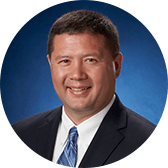Sometimes our shoulders can ache and hurt, but it is not necessarily due to a shoulder injury – it may be due to a slow development of biceps tendonitis. Tendons are tough connective tissues that attach the muscles to the bones, enabling the body to move.
The biceps muscle is located in the upper arm, and it connects via three tendons: Two of them are attached to the scapula (shoulder blade), and the other is attached to the radius bone at the elbow. The “-itis” suffix means inflammation, which in this case can occur from overusing the muscle.
Causes of Tendonitis in the Biceps
The location of the pain will provide an idea of which biceps tendon is hurt. Types of biceps tendonitis include:
- Distal biceps tendonitis and tear at the elbow
- Proximal biceps tendonitis at the shoulder
- Proximal biceps tendon tear at the shoulder
Although tendons are tough, they can be injured from overuse, trauma like from a fall or an accident, and sports injuries. People who play baseball, swim competitively, or play tennis or golf are at an increased risk for inflammation and small tears of these tendons, and this can cause pain.
While it is possible to get biceps tendonitis at both ends of the biceps, it is usually only one end that is affected. Inflammation in the shoulder or upper portion of the biceps tendon can occur concurrently with rotator cuff tendonitis, because the biceps tendon is actually one of the tendons that comprise the rotator cuff.
How Is It Diagnosed?
An orthopedist will examine the shoulder, check the range of motion, and note any portion of the movement that causes pain. The physician will assess the shoulder’s performance for proper motion, strength, and signs of instability.
If it is determined that a problem exists, the orthopedist may order diagnostic imaging exams like an X-ray to see whether any other problems are present in the shoulder. After the scan, the doctor may order an MRI to verify whether the biceps tendon shows any tears or damage.
Treating Biceps Tendonitis
At first, conservative methods will be used to seek improvements, such as the RICE method: rest, ice, compression, and elevation. The doctor may also advise that you take NSAIDs (non-steroidal anti-inflammatory drugs) like ibuprofen or acetaminophen, and possibly recommend wearing a sling for a couple of weeks to immobilize the joint and give it time to heal on its own.
If these don’t result in any improvement, steroid injections can be done to try to relieve some discomfort. A course of physical therapy can also help to strengthen the surrounding muscle tissues to help relieve the pressure being placed on the inflamed tendons.
If conservative measures do not help, the orthopedist may recommend surgery – especially if other severe shoulder problems exist. This surgery is usually done arthroscopically, which is a minimally invasive technique that requires less recovery time than traditional “open” surgery. Your orthopedic surgeon will determine which treatment should have the best results in your case.
Shoulder Surgeon in Colorado Springs
If you are having shoulder pain, it may be caused by biceps tendonitis. It’s a good idea to have your shoulder evaluated by a skilled and experienced orthopedic physician who understands musculoskeletal injuries and how best to treat them.
Contact us at the Colorado Center of Orthopaedic Excellence by calling (719) 623-1050 or request an appointment online, and get on the road to recovery with some of the most talented orthopedists in Colorado.












